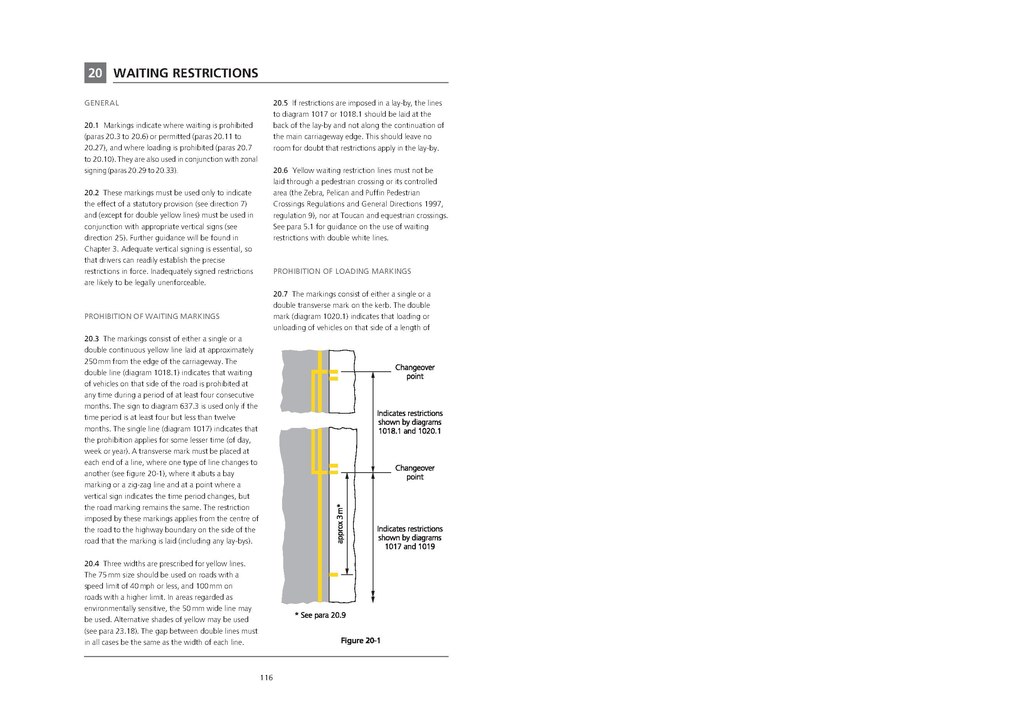20WAITING RESTRICTIONS
GENERAL
20.1 Markings indicate where waiting is prohibited (paras 20.3 to 20.6) or permitted (paras 20.11 to 20.27), and where loading is prohibited (paras 20.7 to 20.10). They are also used in conjunction with zonal signing (paras 20.29 to 20.33).
20.2 These markings must be used only to indicate the effect of a statutory provision (see direction 7) and (except for double yellow lines) must be used in conjunction with appropriate vertical signs (see direction 25). Further guidance will be found in Chapter 3. Adequate vertical signing is essential, so that drivers can readily establish the precise restrictions in force. Inadequately signed restrictions are likely to be legally unenforceable.
20.3 The markings consist of either a single or a double continuous yellow line laid at approximately 250 mm from the edge of the carriageway. The double line (diagram 1018.1) indicates that waiting of vehicles on that side of the road is prohibited at any time during a period of at least four consecutive months. The sign to diagram 637.3 is used only if the time period is at least four but less than twelve months. The single line (diagram 1017) indicates that the prohibition applies for some lesser time (of day, week or year). A transverse mark must be placed at each end of a line, where one type of line changes to another (see figure 20-1), where it abuts a bay marking or a zig-zag line and at a point where a vertical sign indicates the time period changes, but the road marking remains the same. The restriction imposed by these markings applies from the centre of the road to the highway boundary on the side of the road that the marking is laid (including any lay-bys).
20.4 Three widths are prescribed for yellow lines. The 75 mm size should be used on roads with a speed limit of 40 mph or less, and 100 mm on roads with a higher limit. In areas regarded as environmentally sensitive, the 50 mm wide line may be used. Alternative shades of yellow may be used (see para 23.18). The gap between double lines must in all cases be the same as the width of each line.
20.5 If restrictions are imposed in a lay-by, the lines to diagram 1017 or 1018.1 should be laid at the back of the lay-by and not along the continuation of the main carriageway edge. This should leave no room for doubt that restrictions apply in the lay-by.
20.6 Yellow waiting restriction lines must not be laid through a pedestrian crossing or its controlled area (the Zebra, Pelican and Puffin Pedestrian Crossings Regulations and General Directions 1997, regulation 9), nor at Toucan and equestrian crossings. See para 5.1 for guidance on the use of waiting restrictions with double white lines.

PROHIBITION OF LOADING MARKINGS
20.7 The markings consist of either a single or a double transverse mark on the kerb. The double mark (diagram 1020.1) indicates that loading or unloading of vehicles on that side of a length of
116
